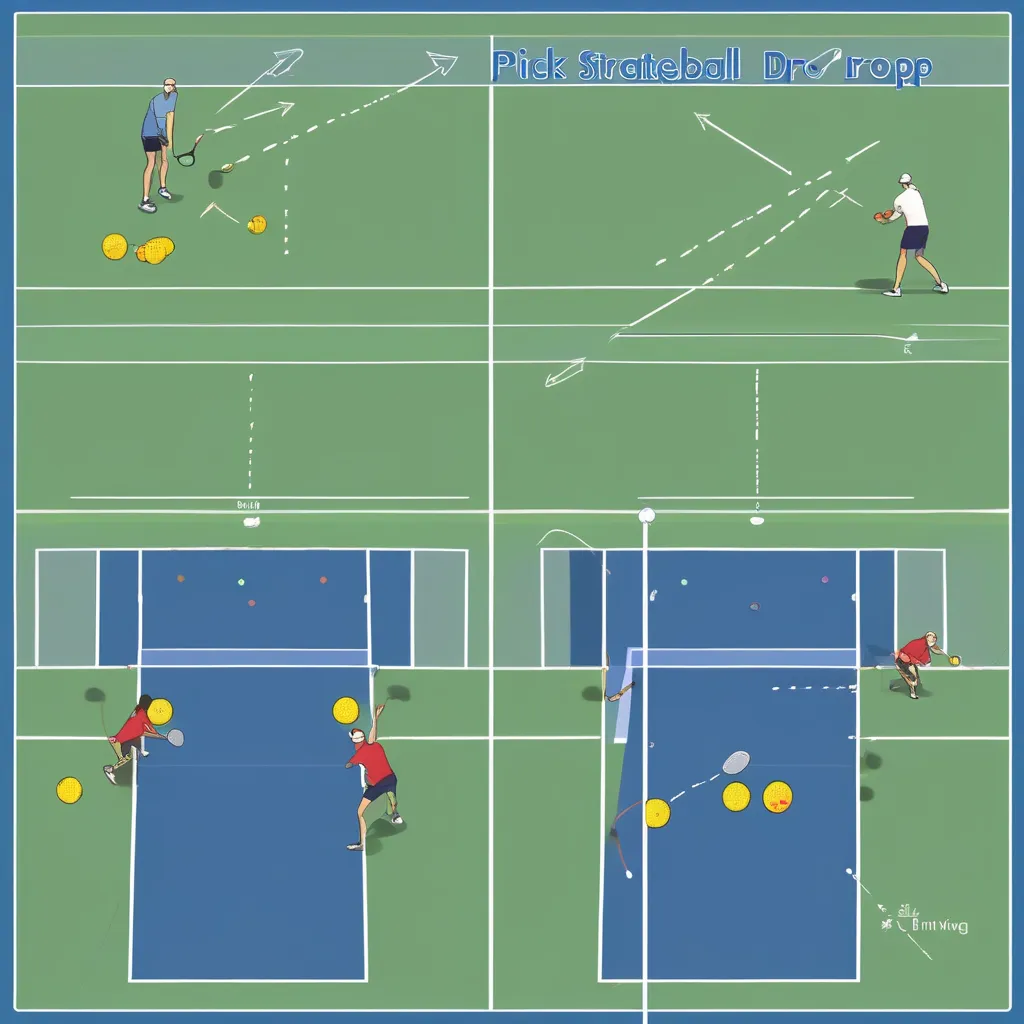Imagine this: you’re on the pickleball court, paddle in hand, the sun glinting off the net. You’ve got the basic shots down, but something’s missing. You’re losing points, and you’re not sure why. The answer? Strategy. Just like any sport, pickleball isn’t just about hitting the ball; it’s about hitting it smart. This guide will dive into how to develop basic pickleball match strategies, giving you the edge you need to dominate the court.
Understanding the Fundamentals of Pickleball Strategy
Before we jump into specific strategies, let’s review some fundamental principles. These are the building blocks upon which winning pickleball matches are built.
The Non-Volley Zone (NVZ): Your Strategic Battlefield
The NVZ, often called “the kitchen,” is a seven-foot area on either side of the net. Understanding its rules is crucial. You can’t volley the ball while standing within the NVZ, unless the ball bounces first. This creates a strategic dynamic where controlling the NVZ becomes paramount. Think of it as prime real estate in pickleball – whoever owns the kitchen, often controls the point. Learn more about the non-volley zone and its strategic implications at this link: the role of the non-volley zone in pickleball strategy.
Positioning: The Art of Court Coverage
Proper positioning is key to reaching shots effectively and covering the court. In doubles, you and your partner should strive to maintain a side-by-side position at the non-volley zone line whenever possible. This allows for maximum court coverage and minimizes gaps for your opponents to exploit. Learn more about positioning yourself on the pickleball court here: how to position yourself on the pickleball court.
Shot Selection: Playing Smart, Not Hard
Power isn’t everything in pickleball. Strategic shot selection is about choosing the right shot at the right time. A well-placed dink can be more effective than a powerful smash, especially in doubles.
Basic Pickleball Match Strategies
Now, let’s delve into some specific basic strategies you can implement in your next match:
The Third Shot Drop: Setting the Stage for Success
The third shot drop is arguably the most important shot in pickleball. After the serve and return, the serving team executes a drop shot, aiming for the opponent’s kitchen line. This forces the opponents back, allowing the serving team to move up to the non-volley zone line, establishing an offensive position. Mastering this shot is essential for gaining control of the point.
The Dink Game: Controlling the Net
Dinking is the art of hitting soft shots that land in the opponent’s NVZ. The goal is to force an error or create an opportunity for a put-away volley. Dinking requires patience and finesse, but it’s an incredibly effective strategy for controlling the net. Think of it as a chess match at the kitchen line.
Returning the Serve: Setting the Tone
A strong return of serve can set the stage for a winning point. Aim deep, towards the baseline, to push your opponents back and give yourself time to get to the net. Avoid hitting the return directly at the server; aim for their partner or the open court.
Communication in Doubles: A United Front
In doubles pickleball, communication is paramount. Call out shots, discuss strategy during side-outs, and support your partner. A well-coordinated team can overcome superior individual talent. “Pickleball is a team sport, especially in doubles,” says Sarah Ansboury, a renowned pickleball coach. “Clear communication is essential for success.”
Exploiting Weaknesses: Target and Conquer
Observe your opponents and identify their weaknesses. Are they struggling with backhands? Do they leave open spaces on the court? Once you’ve identified their vulnerabilities, target them relentlessly. Adapting your strategy based on your opponent’s weaknesses is a key element of winning pickleball.
Advanced Strategies for Taking Your Game to the Next Level
Once you’ve mastered the basics, you can start incorporating more advanced strategies. Check out this article on advanced pickleball strategies: advanced pickleball strategies for experienced players. This includes shot sequencing for tactical advantages, which you can learn more about here: pickleball shot sequencing for tactical advantages. Also, if you’re a beginner and have some questions, you can find answers here: frequently asked questions by pickleball beginners.
 Pickleball Match Strategies
Pickleball Match Strategies
Conclusion: Putting It All Together
Mastering pickleball isn’t just about hitting the ball hard; it’s about playing smart. By understanding the fundamentals, practicing these basic strategies, and continually analyzing your game, you can transform your pickleball experience and start dominating the court. Remember to communicate effectively with your partner, adapt your strategies based on your opponents, and, most importantly, have fun! Now, get out there, put these strategies to the test, and let us know what works best for you in the comments below! Share this article with your pickleball buddies and let’s all elevate our game together!
- Baker, Joe (Author)
- English (Publication Language)
- Bond, Payton (Author)
- English (Publication Language)
- Anderson, Brian (Author)
- English (Publication Language)
- Palcic, Lisa (Author)
- English (Publication Language)
- Foster, Blake (Author)
- English (Publication Language)
- Carnot, Prem (Author)
- English (Publication Language)
- Hall, Dennis (Author)
- English (Publication Language)
- Callahan, John (Author)
- English (Publication Language)
- Publishing, Fitness Research (Author)
- English (Publication Language)
- Arthur, S. M. (Author)
- English (Publication Language)









